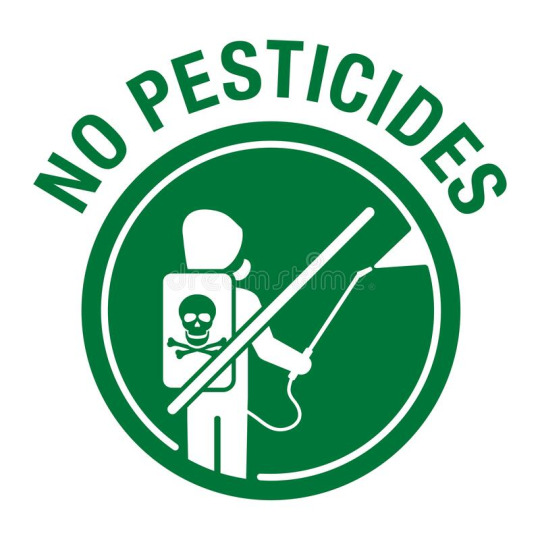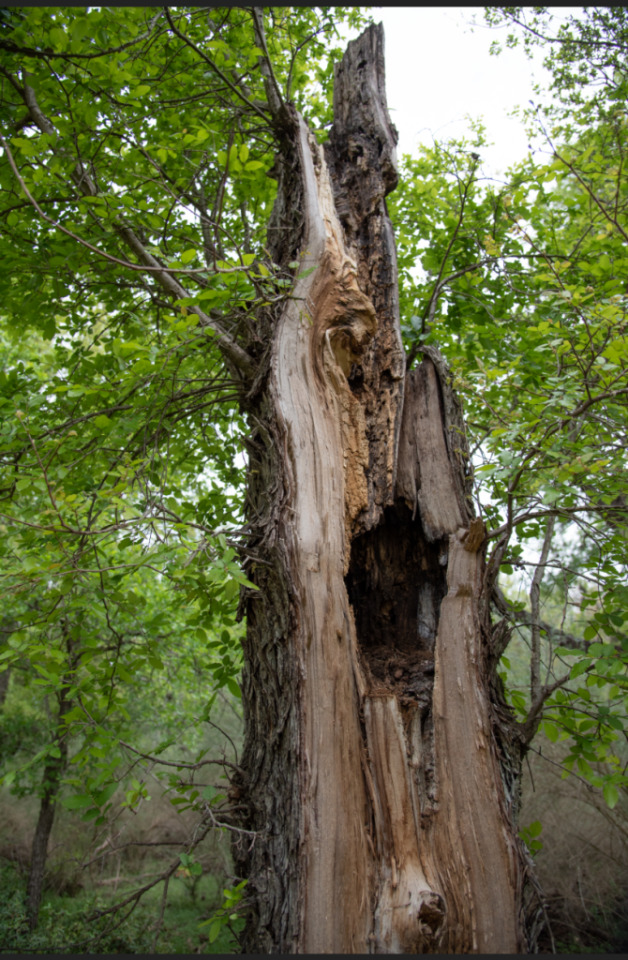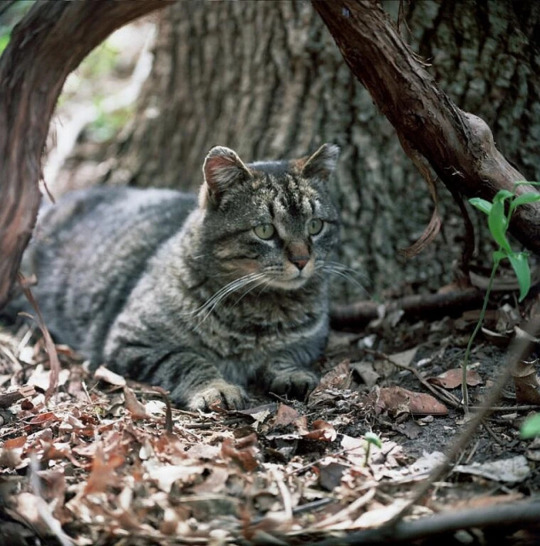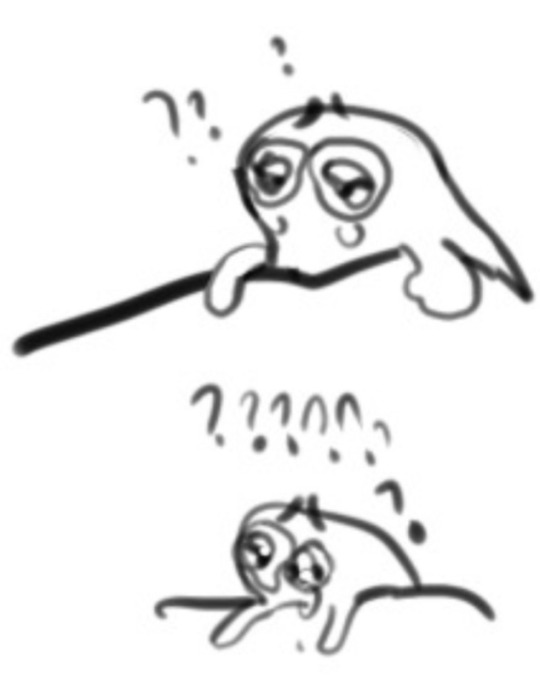#anti mowing
Text
Little message for any Americans who come across my blog:
REJECT YOUR HOMEOWNER’S ASSOCIATION!!!!!!
GROW NATIVE PLANTS AND/OR CORN ON YOUR FRONT LAWN!!!!!!!!
Not saying you HAVE to! But HOAs are still a stupid idea anyway.
🔥🔥🔥🔥🔥🔥🔥🔥🔥🔥🔥🔥🔥🔥🔥🔥🔥🔥🔥🔥🔥🔥🔥🔥🔥🔥🔥🔥🔥🔥🔥🔥🌽🌽🌽🌽🌽🌽🌽🌽🌽🌽🌽🌽🌽🌽🌽🌽🌽🌽🌽🌽🌽🌽🌽🌽🌽🌽🌽🌽🌽🌽🌽🌽🌽🌽🌽🌽🌽🌽🌽🌽🌽🌽🌽🌽🌽🌽🌽🌽🌲🌲🌲🌲🌲🌲🌲🌲🌲🌲🌲🌲🌲🌲🌲🌲🌻🌻🌻🌻🌻🌻🌻🌻🌻🌻🌻🌻🌻🌻🌻🌻🏳️⚧️🏳️⚧️🏳️⚧️🏳️⚧️🏳️⚧️🏳️⚧️🏳️⚧️🏳️⚧️🏳️⚧️🏳️⚧️🏳️⚧️🏳️⚧️🏳️⚧️🏳️⚧️🏳️⚧️🏳️⚧️🏳️🌈🏳️🌈🏳️🌈🏳️🌈🏳️🌈🏳️🌈🏳️🌈🏳️🌈🏳️🌈🏳️🌈🏳️🌈🏳️🌈🏳️🌈🏳️🌈🏳️🌈🏳️🌈🇮🇪🇮🇪🇮🇪🇮🇪🇮🇪🇮🇪🇮🇪🇮🇪🇮🇪🇮🇪🇮🇪🇮🇪🇮🇪🇮🇪🇮🇪🇮🇪🇦🇲🇦🇲🇦🇲🇦🇲🇦🇲🇦🇲🇦🇲🇦🇲🇦🇲🇦🇲🇦🇲🇦🇲🇦🇲🇦🇲🇦🇲🇦🇲(okay that’s enough flags)
And if you can’t do that. Defy them in any way you can. No matter how small it may be.
FUCK HOAs!
HOAs can eat shit!
Feel free to reblog the shit out of this one if you wish!
Also please reblog my posts on sending aid to the Armenians and the Assyrian people too! They’re on my blog.
#personal stuff#dougie rambles#political crap#for any yanks out there#anti homeowner association#fuck the HOA#housing#homeowner association#anti lawn#anti mowing#fuck HOAs#rewilding#homeowners association#corn#reblog this#anti HOA#no more mowing#pollinators#tenant rights#anti landlords#fuck landlords#neighbourhood associations#kill your lawn#lawn#fuck lawns#signal boost#signal b00st#signal boooooost#please reblog this#reblog the shit out of this
2K notes
·
View notes
Text
Chemically sterilized...or mechanically sterilized?
It is clear that applying chemicals to your yard and landscape, be it fertilizers, weed killers, or pesticides, has devastating effects to the community of life that is present in every place.
But is the terrifying decline in insects explainable by chemicals alone?
When i am in mowed environments, even those that I know have no lawn chemicals, they are almost entirely empty of life. There are a few bees and other insects on the dandelions, but not many, and the only birds I see are American robins, Grackles, and European starlings.
Even without any weed killers at all, regular mowing of a lawn type area eliminates all but a few specially adapted weeds.
The plants of a lawn where I live include: Mouse ear chickweed, Birds-eye Speedwell, Common blue violet, Dandelion, Wild Garlic, Creeping charlie, White Clover, Black Medick, Broad-leaved plantain, Mock Strawberry, Crabgrass, Small-flowered Buttercup, Ribwort Plantain, Daisy Fleabane, a few common sedges, Red Deadnettle...That sounds like a lot of plants, but the problem is, almost all of them are non-native species (Only Violets, Daisy Fleabane, and the sedges are native!) and it's. The Same. Species. Everywhere. In. Every. Place.
How come...? Because mowed turf is a really specific environment that is really specifically beneficial to a number of almost entirely European plants, and presents stressors that most plants (including almost all native north american plants) simply can't cope with.
The plants mentioned above are just the flowering weeds. The grasses themselves, the dominant component of the lawn, are essentially 100% invasive in North America, many of them virulently and destructively invasive.
Can you believe that Kentucky bluegrass isn't even native to Kentucky? Nope, it's European! The rich pasture of the Bluegrass region of Kentucky was predominantly a mix of clover, other legumes, and bamboo. The clovers—Kentucky clover, Running buffalo clover, and buffalo clover—are highly endangered now (hell, kentucky clover wasn't even DISCOVERED until 2013) and the bamboo—Giant rivercane, Arundinaria gigantea—has declined in its extent by 98%. Do European white and red clovers fulfill the niches that native clovers once did? Dunno, probably not entirely.
One of the biggest troubles with "going native" is that North America legitimately does not have native grass species that really fill the niche of lawn. Most small, underfoot grassy plants are sedges and they are made for shady environments, and they form tufts and fancy sprays, not creeping turf. Then there's prairie grasses which are 10 feet tall.
What this means, though, is that lawns don't even remotely resemble environments that our insects and birds evolved for. Forget invasive species, lawns are an invasive BIOME.
It's a terrible thing, then, that this is just what we do to whatever random land we don't cover in concrete: back yards, road margins, land outside of churches and businesses, spaces at the edges of fields, verges at bypasses and gas stations...
Mowing, in the north american biomes, selects for invasive species and promotes them while eliminating native species. There's no nice way to put it. The species that thrive under this treatment are invasive.
And unfortunately mowing is basically the only well-known and popular tool even for managing meadow and prairie type "natural" environments. If you want to prevent it from succeeding to forest, just mow it every couple of years.
This has awful results, because invasive species like Festuca arundinacea (a plant invented by actual Satan) love it and are promoted, and the native species are harmed.
Festuca arundinacea, aka Tall Fescue, btw is the main grass that you'll find in cheap seed mixes in Kentucky, but it's a horrific invasive species that chokes everything and keeps killing my native meadow plants. It has leaves like razor blades (it's cut me so deeply that it scarred) and has an endosymbiont in it that makes horses that eat it miscarry their foals.
And this stuff is ALL OVER the "prairie" areas where I work, like it's the most dominant plant by far, because it thrives on being mowed while the poor milkweeds, Rattlesnake Master and big bluestems slowly decline and suffer.
It's wild how hard it is to explain that mowing is a very specific type of stressor that many plants will respond very very negatively to. North American plants did not evolve under pressures that involved being squished, crushed, snipped to 8 inches tall uniformly and covered in a suffocating blanket of shredded plant matter. That is actually extremely bad for many of the prairie plants that are vital keystone species. Furthermore it does not control invasive species but rather promotes them.
Native insects need native plant cover. Many of them co-evolved intimately with particular host plants. Many others evolved to eat those guys. And Lord don't get me started on leaf removal, AKA the greatest folly of all humankind.
So wherever there is a mowed environment, regardless of the use of chemicals or not, the bugs don't have the structural or physical habitat characteristics they evolved for and they don't have the plant species they evolved to be dependent on.
Now let's think about three-dimensional space.
This post was inspired when I saw several red winged blackbirds in the unmowed part of a field perching on old stems of Ironweed and goldenrod. The red-winged blackbirds congregated in the unmowed part of the field, but the mowed part was empty. The space in a habitat is not just the area of the land viewed from above as though on a map. Imagine a forest, think of all the squirrels and birds nesting and sitting on branches and mosses and lichens covering the trunks and logs. The trees extend the habitat space into 3 dimensions.
Any type of plant cover is the same. A meadow where the plants grow to 3 feet tall, compared with a lawn of 6 inches tall, not only increases the quality of the habitat, it really multiplies the total available space in the habitat, because there is such a great area of stems and leaves for bugs and birds to be on. A little dandelion might form a cute little corner store for bugs, A six foot tall goldenrod? That's a bug skyscraper! It fits way more bugs.
It's not just the plants themselves, it's the fallen leaves that get trapped underneath them—tall meadow plants seem to gather and hoard fallen leaves underneath. More tall plants is also more total biomass, which is the foundation of the whole food chain!
Now consider light and shade. Even a meadow of 3ft tall plants actually shades the ground. Mosses grow enthusiastically even forming thick mats where none at all could grow in the mowed portions. And consider also amphibians. They are very sensitive to UV light, so even a frog that lives in what you see as a more "open" environment, can be protected by some tall flowers and rushes but unable to survive in mowed back yard
#anti lawn#kill your lawn#native plants#the ways of the plants#native plant gardening#plants#random#bitching about mowing again
867 notes
·
View notes
Text
Un-Actions, or Restriction of Activities
This is my first post in a series I’ll be making on how to increase biodiversity on a budget! I’m not an expert--just an enthusiast--but I hope something you find here helps!
There’s a good handful of ways you can help increase biodiversity in your yard that don’t require buying things--in fact, these may actually help you save money in the long run! They may seem small and simple, but every bit counts! Whether you can do these in totality, or just limit how often you do these actions, it’ll make a difference.
Not Mowing, or Mowing Less Often

Turf grass lawns are considered a monoculture, meaning they don’t provide much opportunity for insects to find habitat--so few other creatures find them enjoyable either. An expanse of turf grass is, in many ways, a barren wasteland in the eyes of wildlife--too exposed to cross, with few to no opportunities for food or shelter, leaving them exposed to blazing hot sun, freezing cold, or any predators that may be lurking nearby. A place to be avoided. The simple act of letting your grass grow unbothered gives a chance for wildflowers to grow, and for your grass to grow taller--providing more habitat for insects, which then provides more habitat to birds and other creatures that feed on said insects. Wildlife want nothing more than to skirt by unnoticed, so even leaving the grass tall along the edges of a fence or yard can help a little. Even restricting mowing to every other week, or at a higher blade setting, can be a huge help. If HOAs or city ordinances are fussy about lawn length in the front yard, you can likely still keep grass higher in the backyard. Or, you can create a ‘feature’ where grass is allowed to grow long in a specific area. If it looks purposeful, people are more likely to accept it. Not mowing under trees or close to shrubs not only leaves space for wildflowers to grow, but also means you don’t have to deal with mowing over bumpy roots and other difficulties. Cutting different areas at different times can be an option for letting grass grow long in some areas while still having available places for play and entertainment. I’ve seen some people plant flower bulbs when pulling up weeds, so in the future they'll bloom in early spring before mowing is usually necessary. This could be another fun way of adding biodiversity to a lawn without--or before you--begin mowing in spring.
Not worrying about mowing, or doing it less often, saves you in time, money, and energy. You won’t have to buy as much gasoline for your mower, and Saturday afternoons can be free to be enjoyed in other ways aside from being sticky and sweaty and covered in grass stains. In addition, you’ll likely be lowering your own carbon emissions!
If you do have to mow your lawn, I’ve got ways you can use your grass clippings to boost biodiversity later in the post series!
Not using pesticides, herbicides, fungicides, etc.

One of the next-biggest non-actions you can do asides from not mowing is using fewer fewer to no herbicides, fungicides, and pesticides in your yard. This’ll easily allow for more biodiversity. Allowing more insects and a wide array of plants to thrive will feed back into the entire food chain in your area. In addition, these types of chemicals have been tied to algae blooms, death of beneficial insects, harm to birds, fish, and even humans. Soil is supposed to be full of fungi, especially fungal mycelium that essentially acts as a network for plants to communicate, share nutrients, and support each other--fungicide kills that, and typically makes all other lawn problems even worse in a negative feedback loop. It may take awhile to see the benefits of avoiding these chemicals, but once you see it, it really is astounding.
However! I can’t lie and say that there haven’t been points where I needed to use pesticides at some points in my gardening journey. In these cases, try to use products that are organic--like diatomaceous earth, neem oil, etc--and use them accurately, correctly, and sparingly. Follow instructions on how to apply them safely and responsibly--for example, on non-windy days and during times when bees and other pollinators aren’t likely to be out and about. With some pests (read: oleander aphids, in my experience), a simple jetstream of water is enough to force them off the plant where they’ll be too weak to get back. Eventually, you should have a balanced enough ecosystem that no one insect pest causes a major issue with the work you’re doing to boost biodiversity.
If you can bear to, try handling pests manually. Squishing pest bugs in your hand is a pretty foolproof way to get rid of some problems, or spraying them with a mix of soap and water can do the trick on some insects. Alternatively, picking them off your plants and into a bucket of soapy water is also a valid option. You’ve heard of baptism by fire, now get ready for… baptism by soap?
But also! Try reconsidering what you consider a pest! Tomato hornworms are hated by gardeners, for devouring the foliage of beloved tomato, pepper, and potato plants. But killing the tomato and tobacco hornworm means getting rid of sphinx moths, also known as hummingbird or hawk moths! Hawk moths are vital to the survival of many native plants, and are sometimes even the only species that pollinates them. If you can bear to, consider sacrificing a few tomato plants, or growing a few extras, so we can continue having these beautiful moths for years to come. After all, they may not even do significant damage to the plants!

With that in mind, be friendly to your natural pest managers! Lacewings, ladybugs, praying mantises, wasps, birds, bats, and more will help manage pest populations in your environment! Encourage them by planting things they like, providing habitat, and leaving them be to do their work! Avoiding pesticides helps make your garden a livable environment for them, too!
Letting Weeds Grow
Many of the plants we know as 'weeds' are actually secondary succession species and native wildflowers. Milkweed was regarded as a noxious, annoying weed for a long time, and now people are actively trying to plant them after learning about the important role they play in our environments! Weeds are adapted to take over areas that have been cleared out of other plants after a disaster, so they're doing much of the initial work in making a habitat for other creatures. In fact, many of them will simply die back as the environment repairs itself.
An important thing to note is to please make sure that your ‘weeds’ are not invasive species. Work on learning how to identify native and invasive species in your area, and pull out what’s harmful to leave room for what’s good!
Don’t Rake (Or At Least Don’t Bag Your Leaves)

Many insects overwinter in piles of leaves that we often rake away and bag up in the fall and winter. By doing this, we are actively throwing away the biodiversity of our neighborhoods! If you can, leave the leaves where they fall!
If you do need to rake, put the leaves in places wildlife can still access it instead of bagging it up. Move your leaves into garden beds to serve as mulch, or along the edge of fences to rest while keeping egg cases and hiding bugs intact and free to release come spring.
Leave Snags Where They Are

Snags are dead trees/dead branches on living trees. They provide an important wildlife habitat--many birds nest in them, or use them to seek cover from rain, and many insects will also live in snags (making them an additional food source for birds and other creatures). Tree cavities are used as nests by hundreds of bird species in the US, and many mammals use them as well, such as bats, squirrels, raccoons, and sometimes even bears. Some trees form cavities while they’re still alive, but in conifers they’re more likely to form after death. Crevices between the trunk of a dead tree and its peeling bark provide sun protection for bats and amphibians, and leafless branches make great perching areas for birds of prey to hunt from above. The decaying wood is home to insects and fungi, who then feed birds, mammals, amphibians, and reptiles. Do check on the snags regularly to ensure they don’t serve a threat to any nearby structures, but whenever possible, leave them be!
Keep Your Cat Inside

If you have an outdoor cat, consider making the adjustments to have it be an indoor cat. If you have an indoor cat, keep it as an indoor cat. Free ranging cats impact biodiversity through predation, fear effects, competition for resources, disease, and more. Keeping little Mittens inside does a lot more to help than it may seem from the outside.
That’s the end of this post! My next one’s gonna be on things you can add to your space that aren’t directly related to growing plants. For now, I hope this advice helps! Feel free to reply with any questions, success stories, or anything you think I may have forgotten to add in!
#biodiversity#solarpunk#gardening#outdoor gardening#lawn culture#anti lawn culture#environmental stewardship#(i think that counts)#ani rambles#out of queue#the biodiversity saga#I know I said this in the masterpost already but another reminder some people aren't in a position to do all or some or even any of this#i have so far been unsuccessful in convincing my parents to not mow or rake because we live in an HOA neighborhood#but do what you can/are able to! it'll help!
1K notes
·
View notes
Text
Sansa and Willas is intrinsically sad to me because he would’ve never let her name their children Eddard or Robb or Brandon, maybe Rickon but even then. They wouldn’t grow up to hate the Lannisters it be loyal through them because of them being their cousins.
It’d just be heartbreaking to witness the song Sansa built up shattering Like That. The only thing she might be able to have is the little girl who would not make Willas love her who looks exactly like Arya.
#yeah i’m stuck here#anti sansa x willas#because feudalism#and the fact that Margarey is married to a lannister#sansa stark#you know who would let her do that#rhymes with lawn mow
95 notes
·
View notes
Text

People who idolizes him misunderstands or misses the point of his character methinks.
#Never trust mfs on twt who has him as their pfps who goes “he's just like me fr” and post the worst opinions online#They go on deliberate long terms to misunderstand him and his character in general to have it fly pass over their thick skulls.#He usually tells the truth but you shouldn't seek him for truth.#He's a literal 10 years old child who said something like “Erm this is slavery” when his grandad told him to mow the lawn.#He's also the same guy who makes bizarre conspiracy theories about how some successful celeb is out to destroy black entertainment#And he always overanalyzes shit and looks too deep into it which Caesar calls him out for and the comic strips play it as a joke#making Huey the target of said joke.#While he's a radical far left revolutionare he's still a naïve 10 years old boy at heart and it shows.#huey freeman#the boondocks#This is not a Huey slander post (well it kind of is but this is not anti-Huey)
7 notes
·
View notes
Text
ok so apparently I do have to make my lawn more "presentable" because there are venomous snakes in this area. BUT LOOK I FOUND A BUNNY

#full intention of making paths and adding mulch and rocks but i still do not care about mowing the grass#anti lawn
77 notes
·
View notes
Text

#trump is a threat to democracy#trumplicans#anti trump#trump indictment#trump#donald trump#trump yelling#yelling at kids#yelling#mowing#lawn#lawnmower#lawn maintenance#meme#summer job
4 notes
·
View notes
Text
can some please give me a simple summary of what's going on with @anti-wizard-council what's the difference between this new guy and watts???
#i thought just one guy didnt want to be wizards but mow its two???#what makes this new guy different?#is watts on a vacation?#anti wizard council#wizard posting#wizard apprentice problems
7 notes
·
View notes
Text
Everyday i am burdened with the knowledge that the internet would love my father i must prevent him from making a tiktok account at all costs
#he is genuinely so girly pop and he doesn’t even mean to be#he stan’s blackpink and taylor swift and he sings while he mows the lawn#the effect being in a household with only women will have on a man ig#he’s also occasionally incredibly based out of fucking nowhere so there’s that#like he’s a democrat but sometimes he’ll say the most anti capitalist shit and i’m like yes he’s learning#we are on a 4 hour car ride and he’s playing the twilight soundtrack#i think his favorite artist rn is hayley williams#my posts
3 notes
·
View notes
Text
I fucking hate lawn culture
2 notes
·
View notes
Text
Mowing lawns is stupid.
In general. Not just at this time of year.
It turns your garden into a sterile lifeless shitheap.
End it.
21 notes
·
View notes
Text

<< me rn
#im tired of work#schedule changed AGAIN and mow.#i am not going to have a weekend until the beginning of october. hell world. fuck work. .#i have to work literally every day until the 3rd i am GOING to go insane#smile emoji. fuck work sooooo bad#and EVERY time i complain abt it ppl are like 'uwu youll get overtime' OKAY???? I DONT GET THAT MUCH IN OVERTIME?????#LIKE.#SORRY BUT I WOULD RATHER BE AT HOME AND . YKNOW. SPARE MY MENTAL ILLNESS A LITYLE BIT.#uhhghgggghghghhhghgh i need a hyg#im going to write a fic about magnapinna and then maybe bfuau and also maybe subnautica#if anything is going to make me fucking snap ans watch old anti videos its this.#this is the thing thst gets me i am going to give myself a fucking meltdown
2 notes
·
View notes
Text
Meow
0 notes
Note
oh okay. BUT WHAT IF YOURE AN ABNORMALITY CATPERSON????????
(A fish is thrown at you. A test!)
...Fish ??? Why ???
0 notes
Text
The world is set
In canyons deep
While every hour
We fall asleep.
Like waves we clash
On oceans steep
Our own opinions
Flawed to keep
While liars laugh
And killers creep
And every hour
The children weep.
And when our judgement
We will reap
He‘ll ask why we
Thought life so cheap
To set the world
In canyons deep
And every hour
To fall asleep.
#poetry#poem#current events#christianity#guns#gun rights#gun regulation#anti gun#gun laws#politics#border patrol#revolution#america#united states#make america great again#pro choice#pro life#let’s stop fighting#and start actually fucking cARING ABOUT OTHER PEOPLE#PRO LIFE DONT MEAN SHIT IF CHILDREN ARE GETTING MOWED DOWN
1 note
·
View note
Text
Can I get some anti-lawn people to weigh in on the issue of ticks? Because people who mow their lawn too damn often, they're always like "durr hurr not mowing a lawn means ticks", and then they look horribly smug when I don't have a response to that. All I know for positive about lawns is a) they look stupid when they're mowed and b) I hate the sound of lawnmowers, neither of which is accepted as a counter-argument.
360 notes
·
View notes